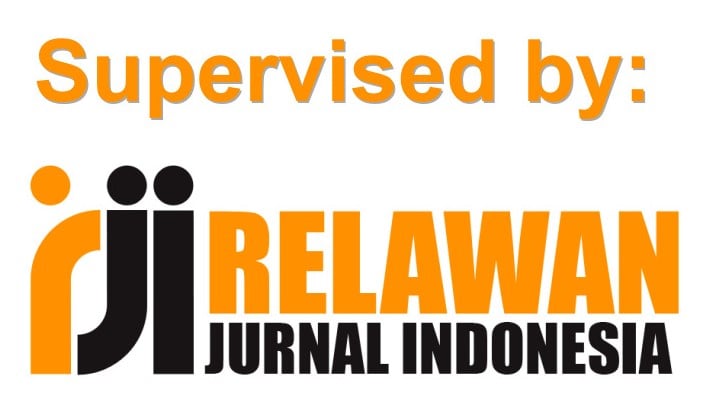ANALISIS SEMIOTIKA ROLAND BARTHES TENTANG FENOMENA JILBOOBS
DOI:
https://doi.org/10.18592/jsi.v4i2.1124Keywords:
Agama, Hijab/Jilbab/Kerudung, Jilboobs, Fashion dan TandaAbstract
Hijab/jilbab is a cloth to cover all of women’s body except face and two palms. Now, there is one controversial Hijab trend, which is Jilboobs phenomenon. Basically, jilboobs means have deviation meaning from the nature of veil. Jilboobs is a critic to Muslim women who wear hijab, but they still wear tight dress or blouse. It causes their indentation body looked very clear, especially in her chest. Then, the jilboobs phenomenon is a sign in fashion culture which very interference how Muslim teenagers to dress up now. The function of jibab is not to cover women genitals anymore, but it becomes a mode that break out the religion rules. The jilboobs phenomenon is a negative connotation from the real jilbab function. The writers used Semiotics theory from Roland Barthes to discuss this jilboobs phenomenon. It tried to reveal about abusing the real jilbab function as covering Muslim women’s genitals and a religion symbol.References
Dewan Redaksi Ensiklopedia Islam, 1997, Ensiklopedia Islam jilid 2, Ichtiar Baru Van Hoeve, Jakarta.
Kurniawan, 2001, Semiologi Roland Barthes, Anggota Ikapi, Magelang.
Muzakki, Akhmad, 2007, Kontribusi Semiotika dalam Memahami Bahasa Agama, UIN Malang Press, Malang.
Aminuddin, 2003, Semantik, Sinar Baru Algensindo Bandung, Malang.
J.D, Parera, 2004, Teori Semantik, Erlangga, Jakarta.
Kurzweil, Edith, 2010, Jaring Kuasa Strukturalisme, Kreasi Wacana, Bantul.
Kaelan, 2009, Filsafat Bahasa Semiotika dan Hermeneutika, Paradigma, Yogyakarta.
Ismail, Fuad farid & Mutawalli, abd. Hamid, 2012, Cara Mudah Belajar Filsafat Barat dan Islam, , IRCISoD, Jogjakarta.
Shihab, M. Quraish, 2012, M. Quraish Shihab Menjawab, Lentera Hati, Tangerang.
El Guindi, Fadwa , 2005, JILBAB Antara Kesalahan, Kesopanan dan Perlawanan, Serambi Ilmu Semesta, Jakarta.
Ahmed, Akbar S, 1993, Posmodernisme (Budaya dan Harapan bagi Islam), Mizan, Bandung.
Fadhlullah, Sayyid Muhammad Husain, 2000, Dunia Wanita dalam Islam, Ikapi, Jakarta.
Al-Jamal, Ibrahim Muhammad, 2000, Tantangan Wanita Muslimah, Pustaka Azzam, Jakarta.
Nassantari, Abdurrahman, 2008, Resiko Buruk Busana Seksi, Pustaka Al-Kautsar, Jakarta.
Fadhlullah, Sayyid Muhammad Husain, 2000, Dunia Wanita dalam Islam, IKAPI, Jakarta.
Barjie B, Ahmad, 2014, Wanita, Keluarga dan Pendidikan Anak,: Pustaka Banua, Banjarmasin.
Piliang, Yasraf Amir, 1999, Hiper Realitas Kebudayaan, LKiS, Yogyakarta.
Padeta, Mansoer, Semantik Leksikal, 2001, Rineka Cipta, Jakarta.
Djadjasudarma, Fatimah, 1993 Semantik I, Eresco, Bandung.
Piliang, Yasraf Amir, 2011 Bayang-Bayang Tuhan : Agama dan Imajinasi, Mizan Publika, Jakarta.
Barthes, Roland, 2004, Mitologi, Kreasi Wacana, Yogyakarta
Ramlan, 1995, Sintaktis, Karyono, Yogyakarta.
Chaer, Abdul, 1990, Pengantar Semantik Bahasa Indonesia, Rineka Cipta, Jakarta.
Sumber Lain:
http://www.malang-post.com (diakses pada tanggal 29 November 2014)
http://blog.kompasiana.com (diakses pada tanggal 25 November 2014).
http://thisisgender.com (diekses pada tanggal 10 desember 2014)
Downloads
Published
How to Cite
Issue
Section
License
Authors who publish with this journal agree to the following terms:
- Authors retain copyright and grant the journal right of first publication with the work simultaneously licensed under a Creative Commons Attribution License that allows others to share the work with an acknowledgment of the work's authorship and initial publication in this journal.
- Authors can enter into separate, additional contractual arrangements for the non-exclusive distribution of the journal's published version of the work (e.g., post it to an institutional repository or edit it in a book), with an acknowledgment of its initial publication in this journal.
- Authors are permitted and encouraged to post their work online (e.g., in institutional repositories or on their website) before and during the submission process, as it can lead to productive exchanges, as well as earlier and greater citation of published work (See The Effect of Open Access).





















